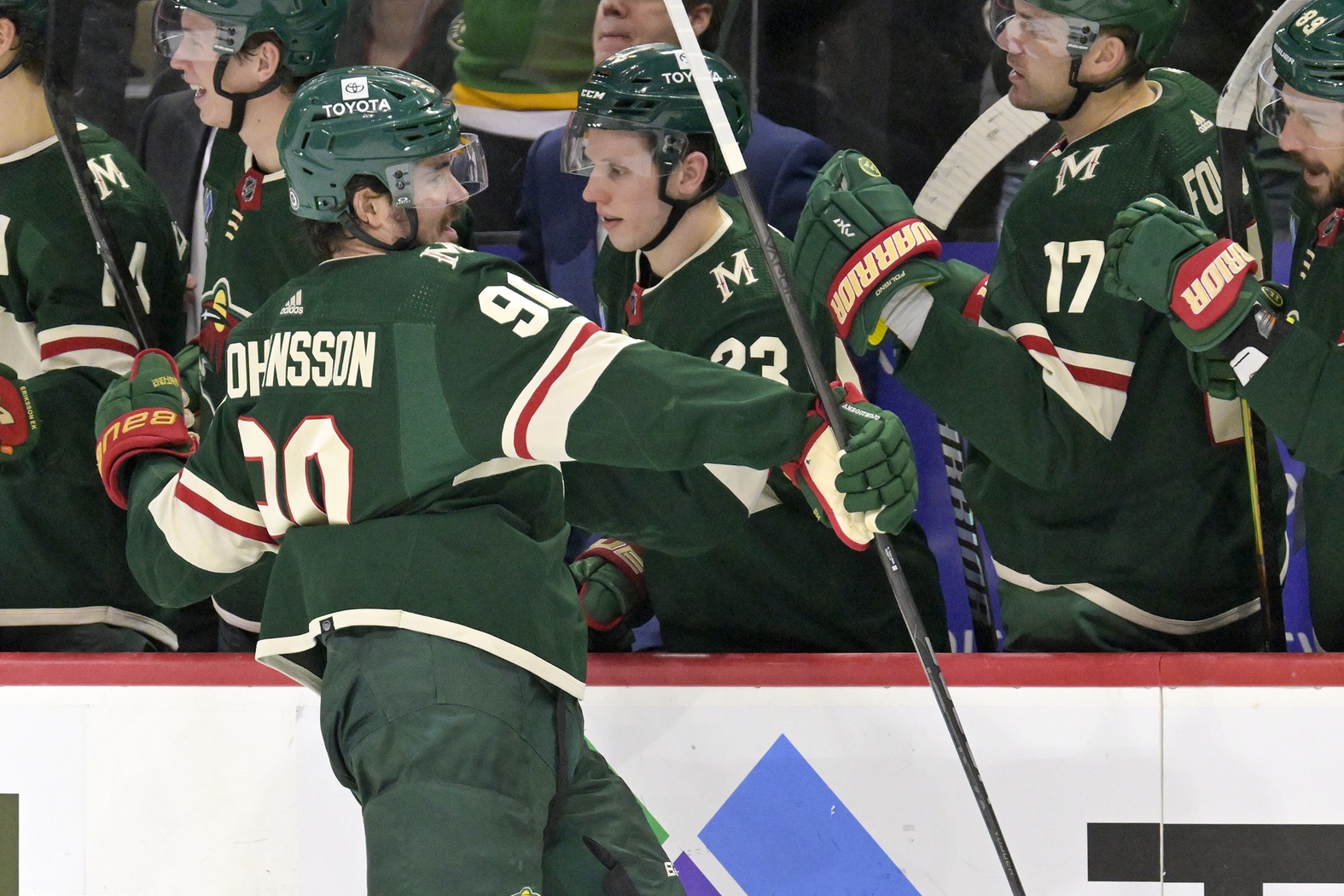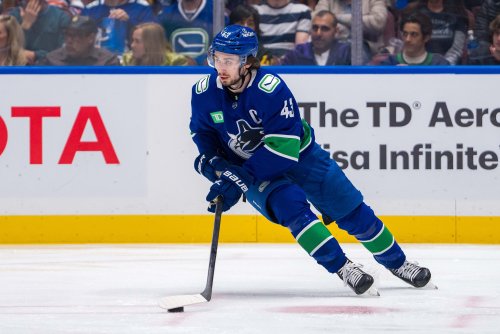
The Minnesota Wild have scored at least five goals in their last four wins after not scoring more than two goals in all but two games over the past month. The Wild are potting pucks with the best of ‘em, but how exactly did this happen?

The Wild seem to have found their offense in their recent 4-2 stretch. They rank second in the league over that span with 4.92 goals per game. The power play has boosted Minnesota’s offense, but the Wild are still sixth in the NHL with 3.38 goals per game at even strength. With wins over solid teams like the Carolina Hurricanes and the Florida Panthers, it may look like Minnesota has meaningfully improved its offense. However, that’s not the case.
While Minnesota’s goals-per-game numbers are good, their offense is currently being boosted by an ugly powerplay and empty netters. The Wild’s offense has improved as the team gets healthier, with Kirill Kaprizov, Marcus Foligno, and Mats Zuccarello returning.
But the offense was dreadful before they got healthy. The Wild were 27th in the NHL in goals per game before the Islanders game. A lot of that was due to injuries and inconsistent play. Still, they didn’t just flip a switch. The underlying numbers suggest that the Wild offense is not magically among the best in the league. Right now, the hockey gods are smiling upon this team.
We can look at a couple of things to highlight how the Wild’s recent offensive surge will probably be short-lived.
First, the Wild’s actual goal output is much higher than what is expected of them. The 3.38 even-strength goals are great. But that's not good compared to the 2.26 goals per game that are expected of them. That’s over a goal-per-game difference in scoring.
The Wild are also shooting the puck at a much higher rate in their past five games than they had been. Throughout this season, the league-leading Vancouver Canucks are shooting 11.81%. Over the past little winning streak, the Wild have shot an absurd 15.77%. The Wild’s shooting percentage was 9.4% before the last five games. That’s a 6.37% difference or an improvement of almost 60% over the course of two weeks. For context, the San Jose Sharks have only shot 8.15% throughout the season, and they are, well…
.png.ce1577b9647c4e893ea29b6d4c63a3c8.png)
Photo credit: NHL.com
The power play has also significantly improved the offense, especially Minnesota’s four powerplay goals in Sunrise. Before the streak, the Wild’s powerplay was 20th in the league in goals per game. But the power play is clicking at the third-most goals per game in their recent win streak.
Many of the Wild’s top scorers have profited from their recent power play success. Half of Joel Eriksson Ek’s ten points have come on the powerplay, and he’s not alone. Brock Faber, Kaprizov, and Zuccarello have generated half their points on the man advantage.
Puck luck has also been on the Wild’s side. They seem to have gotten bounces go their way more than earlier in the year. That’s a difficult stat to quantify. But something tells me this was not what Matt Boldy had in mind when he shot this puck:
PDO is an excellent way to measure Minnesota’s puck luck. For those unfamiliar, PDO adds together a team’s shooting and save percentages. It’s essentially shooting plus a save percentage. Typically, the higher a team's PDO is, the more likely they are to regress. Conversely, the lower it is, the more likely they will improve to the average of 1.000.
Teams with a high PDO are sometimes valid, like the Boston Bruins, who are second in the league with a 1.030 PDO. However, other teams like the Chicago Blackhawks and San Jose Sharks have an understandably low PDO. The Wild also have an unusually high 1.067 PDO, good for the fourth-highest in the league. Before this recent streak, Minnesota had the third-lowest PDO in the league with 0.981. Minnesota is riding a scorching shooting streak and save percentage that puts their PDO among the best in the league. For a team like the Wild that struggles to get points from the bottom six and defenseman, that’s not sustainable.
Minnesota returned to reality in Thursday night's loss to the Nashville Predators. The Wild lost the lead in the third period and failed to muster any offense at even strength. Two powerplay goals were the only offense the Wild could generate in a pivotal home divisional game.
It’s said that you create your own luck. Minnesota’s five-game win streak has been fun; everyone loves offense. If they can maintain it, they could go on a late-season run. But the numbers say the Wild are just getting lucky, and eventually, luck runs out.
All stats and data via Evolving Hockey, Natural Stat Trick, CapFriendly, and HockeyDB unless otherwise noted.
Think you could write a story like this? Hockey Wilderness wants you to develop your voice, find an audience, and we'll pay you to do it. Just fill out this form.







Recommended Comments
Join the conversation
You can post now and register later. If you have an account, sign in now to post with your account.
Note: Your post will require moderator approval before it will be visible.